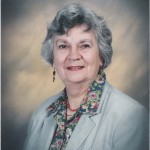Changing Stops: American Organs and Registration in the Nineteenth Century
The nineteenth century saw the evolution of the American organ’s tonal and mechanical design from a retrospective echo of the eighteenth-century English model to a forward-looking prototype of the twentieth-century’s instruments. Overlapping British, German, and French tonal concepts coalesced into a style that was uniquely American. Organ music written by American composers followed a parallel evolution, particularly with regard to registrational practice, plainly influenced by the organs they played.
Barbara Owen holds degrees in organ performance and musicology from Westminster Choir College and Boston University. She is author of numerous articles, entries in The New Grove Dictionary of Music, and books, including The Organ in New England, E. Power Biggs: Concert Organist, The Registration of Baroque Organ Music, The Organ Music of Johannes Brahms, and The Great Organ of Methuen. She was Music Director of the First Religious Society of Newburyport (1963–2002) and Librarian of the AGO Organ Library at Boston University (1985–2012), and is currently active as organist, lecturer, and consultant. A former AGO regional councillor and dean of two chapters, she is past president of the Organ Historical Society and a trustee of Methuen Memorial Music Hall. Honors include the American Musical Instrument Society Curt Sachs Award, the Westminster Choir College Alumni Merit Citation, the Max Miller Book Award, and the Organ Historical Society Distinguished Service Award.

